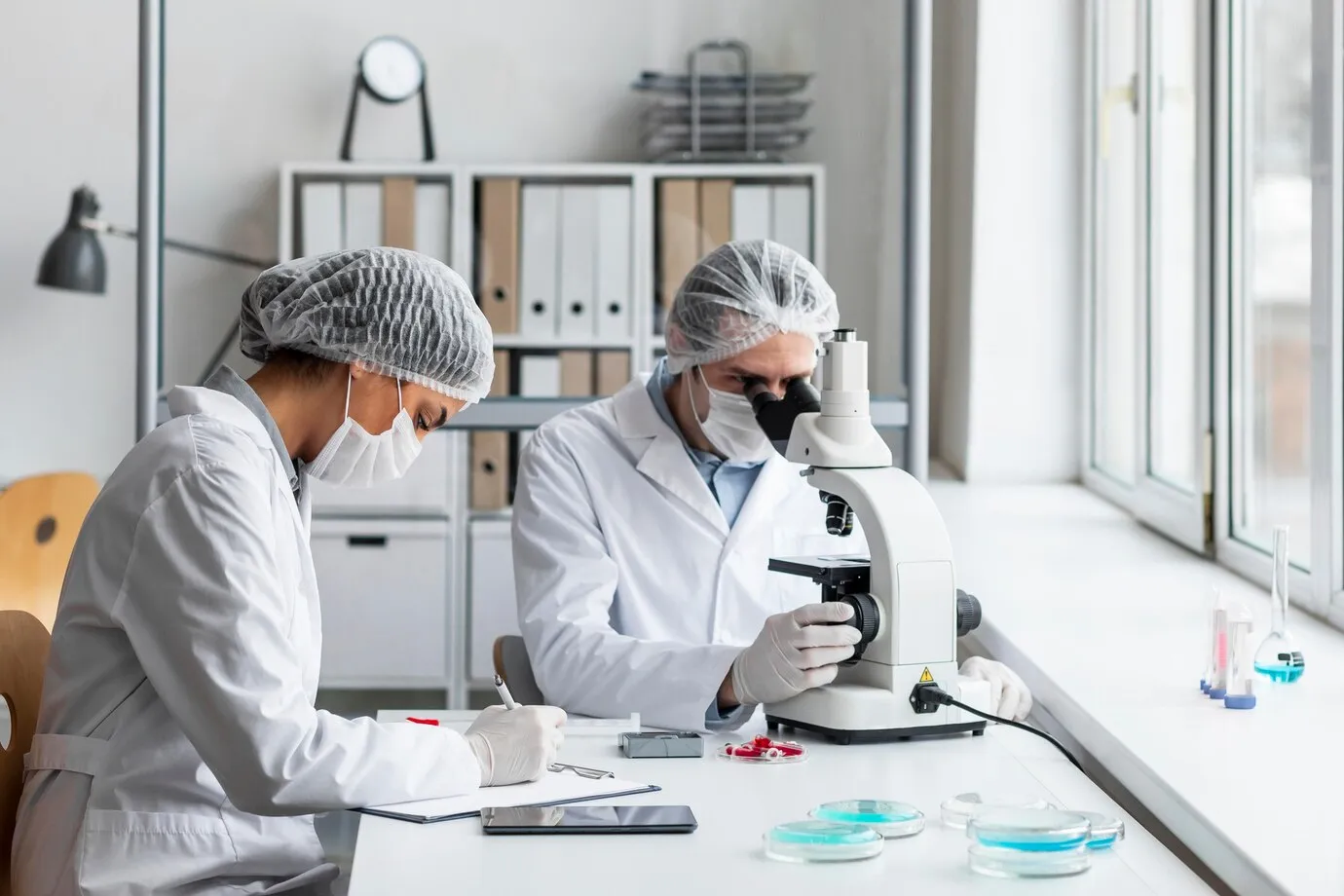Frozen Embryo Transfers (FET) and assisted reproductive technology (ART) practices have been transformed by cryopreservation. Cryopreservation is a medical procedure that consists of freezing embryos at extremely low temperatures, and this has vastly improved the ease, success rate, and cost-effectiveness of fertility treatment globally.
At the heart of most effective FET treatments lies a technology—cryopreservation. This means that frozen donor embryos, similar to donor embryos already frozen, may be stored away for use in the future so that intended parents can exert more control over their fertility process. Fertility clinics such as Indian Egg Donors are leaders in providing the newest cryopreservation and embryo transfer, enabling families to grow confidently and humanely.
What is Cryopreservation
Cryopreservation involves freezing and storing cells, tissue, or embryos at subfreezing temperatures, usually -196°C, using liquid nitrogen. Biologically, within the low temperature, biological processes progress more slowly, so the embryos are stored for years or months and do not rot.
The technology is also important in in-vitro fertilization (IVF) in providing patients with the ability to cryopreserve frozen surplus embryos or frozen donor embryos in Canada following a recent fresh IVF cycle for future use. No matter how brief the interval for whatever reason couples delay pregnancy, undergo medical treatment such as chemotherapy, or desire a subsequent child later in life, cryopreservation provides an insured means of fertility preservation.
The Cryopreservation Process: Step-by-Step
1. Embryo Creation
Embryos are created by fertilizing eggs and sperm in the laboratory during an IVF cycle. Once embryos have successfully been fertilized, they are cultured for a couple of days (5 or 6 days typically) until the blastocyst stage—a time when it is best to freeze. The process also becomes part of the egg donation process, particularly where donor eggs are used.
2. Embryo Assessment
Embryos are graded by embryologists prior to freezing using developmental, morphological, and cell structure grading systems. Only the highest-quality embryos are frozen, and there is a greater possibility of survival if thawed and implantation in the future.
3. Vitrification (Flash Freezing)
Future cryopreservation uses the technique of vitrification, which utilizes ultra-high rates of cooling in a bid to avoid ice-crystal formation that has the potential to damage cells. In vitrification, embryos are placed in a cryoprotectant solution and cooled down very quickly so that they form a glass state rather than being structurally damaged.
4. Storage in Liquid Nitrogen
Liquid nitrogen is used within the cryotank to keep the embryos frozen. The embryos remain frozen and biologically inert until the day of the next cycle transfer. Embryos may also be obtained from a frozen egg donor bank, whose donors’ eggs are fertilized and frozen and donated to recipients.
Thawing and the Frozen Embryo Transfer (FET) Process
After the patients have opted for continuing with a pregnancy, the embryos are thawed extremely slowly under warm conditions. Thawing is merely the opposite of vitrification and has to be done completely impeccably so that the embryo lives.
Once thawed and confirmed viable, the embryo is transferred to the woman’s uterus in a well-controlled FET cycle. It may either be medicated or a natural cycle, depending on the patient’s health profile or at the discretion of the physician.
These clinics, such as Indian Egg Donors, communicate with patients themselves via every step of such a cycle, from preparation and stabilization of hormones to thaw and embryo transfer, so that every step can be performed at its best to ensure success.
Why Cryopreservation Matters in Modern Fertility Treatment
Cryopreservation has become a foreign and Canadian reproductive centers. It is required for mounting success and enabling patients’ individualized reproductive planning. The reasons are as follows:
1. Increased Success Rates
There is evidence to show that FET cycles with frozen embryos have the potential to yield the same, if not superior, donor egg success rates compared to fresh cycles. This owes to greater embryo selection, better uterine preparation, and decreased hormonal burden on the body.
2. More Flexibility
Cryopreservation allows individuals to plan pregnancy on their own terms. Based on medical help, lifestyle, or individual reasons for deferral, embryos like frozen donor embryos can be preserved and used later without any way of harming them.
3. Reduced Costs
By the use of pre-frozen embryos or, in the case of buying them from a frozen egg donor bank, money is no longer spent on a line of IVF treatments and egg retrievals. This decreases the cost of fertility, especially for countries such as Canada, where treatments are produced in mass.
4. Lower Risk of Ovarian Hyperstimulation Syndrome (OHSS)
In the risk cases of OHSS, apart from due to the IVF medication of others, cryopreservation permits delayed embryo transfer until the body has recovered from the drain, decreasing the health risk. Screening in a safe and appropriate way, such as how to become an egg donor, is the clinic’s responsibility in risk avoidance.

Ethical and Emotional Reassurance
In most patients, the possibility of embryo storage is comforting. To have embryos from a failed but infertile IVF to store for future planning gives individuals and couples additional emotional comfort. It precedes single embryo transfer, which avoids multiple gestation complications but still stores more embryos for the future.
For inquisitive minds concerning how to become an egg donor, let them give their best so the process will be respectful, fruitful, and safe. The majority of donors assist others in attaining fertility via well-planned operations like the egg donation process provided by the finest clinics.
Frequently Asked Questions
Q1. What is cryopreservation in fertility treatment?
Ans: Cryopreservation refers to a method of ultra-low temperature freezing of embryos for future use in IVF. Cryopreservation is a useful function to store frozen donor embryos for the subsequent embryo transfer cycle.
Q2. How are embryos frozen for future transfer?
Ans: The embryos are flash-frozen using a procedure called vitrification, which safeguards them against ice damage, and are preserved safely in liquid nitrogen. The process is performed upon the most typical embryos that most fertility clinics recover from a frozen egg donor bank.
Q3. How long can frozen embryos be stored?
Ans: Frozen embryos may be stored safely for a very long time without losing their potential to result in an effective pregnancy. This long storage capability proves to be useful even in the egg donation process for future purposes.
Q4. Is a frozen embryo transfer (FET) as successful as a fresh one?
Ans: FET results are similar to or even superior to fresh transfers, particularly with top-grade frozen embryos. Great donor egg success rates are normally obtained with well-preserved embryos.
Q5. Do Indian Egg Donors offer cryopreservation services?
Ans: Indian Egg Donors offers high-quality cryopreservation and frozen embryo transfer services, including frozen donor embryos in Canada, and offers guidance on how to become an egg donor ethically and safely.
Final Thoughts
Not only embarking on the chilling of embryos, but also chilling hope, time, and opportunity. All within the Frozen Embryo Transfer protocol, this technology has given millions of individuals and couples the ability to build families on their own terms.
With centers like Indian Egg Donors having well-equipped cryopreservation laboratories, the patient is now able to avail enhanced fertility treatment based on his or her own individual needs. With fresh embryos, frozen donor embryos in Canada, or wish to pay it forward and donate, knowing how freezing is accomplished—and why it is accomplished—will enable you to make smart, well-informed decisions about your fertility treatment.

Dr. Veera Saghar
As an Egg Donor Coordinator, she plays a critical role in our company. Her background as a medical graduate from ISRA UNIVERSITY in Pakistan provides us with a solid foundation in the medical sciences. She has seven years of clinical experience practicing in the USA. This has given her firsthand experience when collaborating with patients and their families.
She is responsible for managing the process of egg donation from start to finish. We identify and screen potential egg donors.










